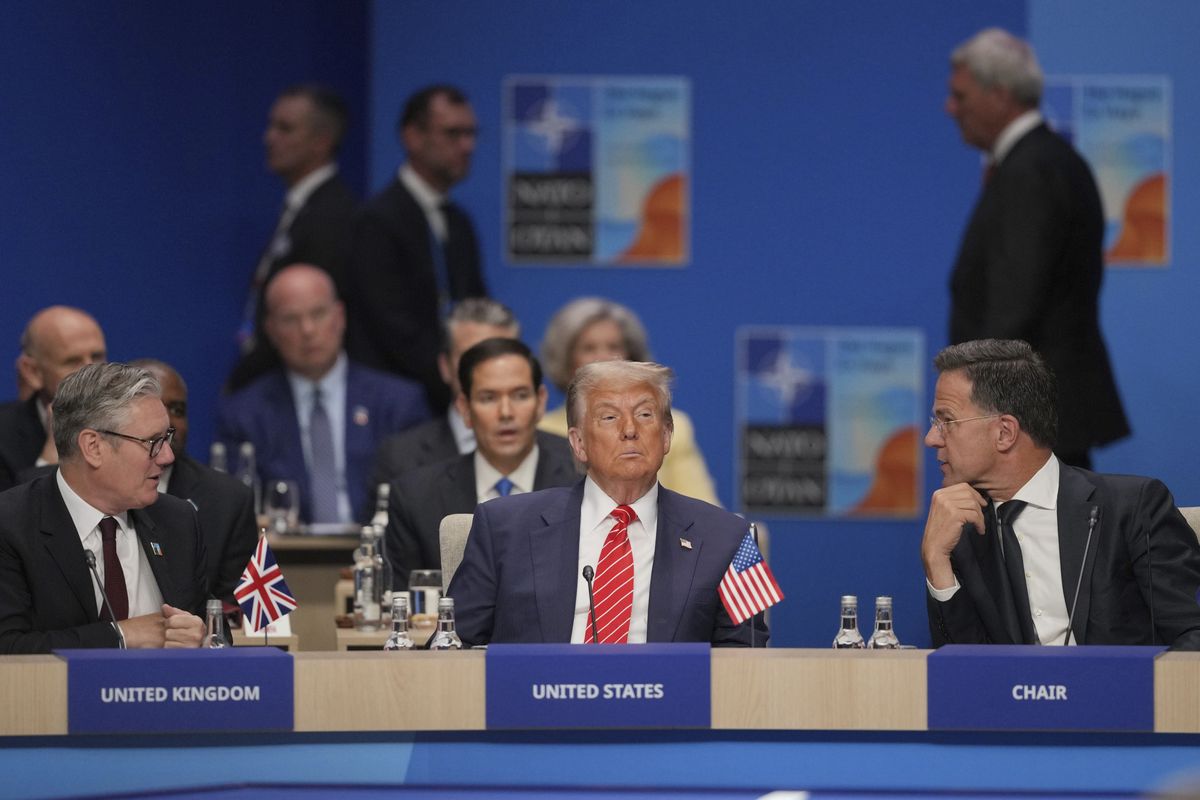Editor’s Note: Over the coming days, The Cipher Brief presents some of our most incisive coverage on key issues of 2016 and a look ahead at what is yet to come in 2017.
The tumultuous nature of 2016 hit Europe especially hard. Wars in the Middle East became a refugee crisis for Europe, and terrorist groups like the Islamic State roiled the continent. This insecurity, combined with growing discontent over economic repercussions for the “losers” of globalization, fueled the rise of populist parties. The continuing enigma of Russia, from its unchecked actions in Ukraine and Syria to the buildup of troops along its western border, divided Europe further; populist and “illiberal” parties of Europe generally support Russian President Vladimir Putin, while moderate parties have taken a strong stance against him – for example, by emphasizing deterrence through the North Atlantic Treaty Organization (NATO).
Meanwhile, the United States in 2016 focused heavily on its own political issues, namely the presidential election, rather than worried about Europe’s political demise. The result: a fragile European Union (EU) that is divided politically, economically, and feeling ever more insecure.
The Refugee Crisis
The refugee crisis brought Europe’s stark divisions to light. In 2015, more than 885,000 migrants arrived in Greece and nearly 154,000 landed in Italy, according to Frontex data. Many of these new arrivals fled from wars in the Middle East, particularly Syria. Last year, more than 1.3 million asylum applications were registered in EU and Schengen-associated countries (states that are part of Europe’s free movement Schengen Area but not part of the EU).
2016 brought the aftermath of those arrivals in Europe – all while more continued to knock on the doors of the Union. The influx of migrants caused polar reactions from EU member states: on the one hand, welcome any migrant who crosses the border, and on the other, erect physical barriers to keep migrants out.
Germany is the prime example of the former. The country, under the leadership of Chancellor Angela Merkel, absorbed more than one million migrants in 2015 and, according to the German Federal Office for Migration and Refugees, expects as many as 300,000 more this year – far more than any other European country.
Hungary is a prominent example of the latter; it completed the construction of a fence on its border with Serbia – a key route for migrants coming from the Middle East – in September 2015. Hungary is also challenging an earlier one-off EU regulation to help Greece and Italy by distributing refugees throughout the continent. In October this year, Hungarians voted in a referendum against mandatory migrant quotas proposed by the EU in its reform of the Common European Asylum System (although the referendum was not legally binding due to low voter turnout).
To justify its position, Hungary and other like-minded countries point to a handful of asylum seekers who are now implicated in a recent wave of terror attacks across Europe. Because so many refugees entered Europe so quickly in 2015, many countries – Germany included – failed to properly vet and/or process them. 2016 felt the consequences.
Europe: A Terror Target
Europe’s latest experience with terror – the attack on a Berlin Christmas market on December 19 – was, according to German authorities, carried out by a rejected asylum seeker from Tunisia. The suspect, Anis Amri, appears to have arrived in Germany in July 2015. He was not deported after his asylum application was denied, even though he was on law enforcement’s radar.
This July, Germany experienced a wave of four attacks – three committed by refugees. On July 18, an asylum seeker from Pakistan used a knife to attack people on a train near Würzburg. On July 24, a 21-year-old asylum-seeker from Syria – who was known to police – killed a woman and injured two others with a machete in the southern German town of Reutlingen. And just a few hours later, a 27-year-old Syrian refugee – who authorities say had been denied asylum a year ago but was allowed to stay in Germany because of the ongoing war in Syria – killed himself and injured 12 others after setting off an explosive device in Ansbach, Germany.
A number of other major attacks rocked Europe this year – from the Brussels bombings in March that left at least 35 people dead and hundreds injured, to the July attack in Nice, France, where a truck driver plowed through a crowd during Bastille Day celebrations, killing more than 80 and injuring more than 400.
These attacks have proved ample fodder for European populist parties that continue to gain ground at the polls.
Populism Proliferates
In a statement following the Berlin Christmas market attack, the chairwoman of Germany’s right-wing populist party Alternative für Deutschland (AfD), Frauke Petry, said, “The radical Islamic terror has hit us right in the middle of Germany. […] It is not only an attack on our freedom and our way of life but on our Christian tradition. Germany is a country which is divided over the immigration question. But the terror will bring us together. These terrorists are godless people.”
The AfD has gained substantial ground since its founding in 2013 and is now represented in 10 of the 16 German state parliaments. It is expected to perform relatively well in Germany’s 2017 federal elections, amongst a populace that is largely dissatisfied with German Chancellor Angela Merkel’s “open arms” policy toward refugees.
France’s right-wing Front Nationale (FN), led by Marine Le Pen, has similarly used terror for political fuel. After the massive attacks in Paris in November 2015, that left at least 130 people dead, FN issued a statement claiming one of the attackers entered Greece among a mass migrant flow and, “as a precaution, Marine Le Pen calls for the immediate halt of all intake of migrants in France.” Florian Philippot, a close advisor to Le Pen, commented, “It is irresponsible to continue this welcoming of migrants.”
A study published this September by research center ELABE finds Le Pen will likely make it to the second round of the 2017 French presidential election with 25 – 28 percent of the vote.
Brexit
The 2016 populist wave scored a major victory in the United Kingdom’s decision to leave the EU – a move advocated by Britain’s right-wing UK Independence Party (UKIP). By a vote of 51.9 to 48.1 percent, a majority of UK voters decided in a referendum this June to pull out of the EU – shocking then-Prime Minister David Cameron and other transatlantic leaders.
In a statement after the vote, the EU’s six founding member nations said, “The Foreign Ministers of Belgium, France, Germany, Italy, Luxembourg and the Netherlands take note with regret of the fact that the British people have spoken out against EU Membership. […] we strongly reaffirm our joint commitment to the European Union.”
In a call with German Chancellor Merkel the day after the vote, the White House reported both Merkel and Obama “said they regretted the decision.”
An apparent beneficiary of the vote, however, is Europe’s eastern neighbor. Russian President Vladimir Putin has long attempted to destabilize the EU, and NATO along with it. Now, with Brexit, the EU will lose one of the strongest supporters of its sanctions against Russia for the war in Ukraine – potentially tipping the balance of power toward EU member states that disagree with sanctions and would like to see closer ties with Russia, including Hungary and Slovakia.
Under the Gaze of Russia, Whither NATO?
The Russian question has the potential to exacerbate Europe’s divisions, particularly vis-à-vis NATO. At the Alliance’s Warsaw Summit this July, NATO members stressed the necessity of both deterrence and dialogue in dealing with Russian aggression. The former topped the agenda, with the announcement of the deployment of one rotational battalion to each of the Baltic nations – Estonia, Latvia, Lithuania – and Poland. Three of the four countries leading these battalions are either non-EU (U.S. and Canada) or planning to exit the EU (Britain).
The other battalion lead is Germany. Deputy Director of the Europe Program at the Center for Strategic and International Studies (CSIS) Jeffrey Rathke told The Cipher Brief, “It is significant that Germany, which has always placed an emphasis on the balance and complementarity of deterrence and defense on the one hand and political dialogue on the other hand, has taken this step.” While Germany and the Baltic states are leaning toward deterrence, other EU and NATO states – Hungary, the Czech Republic, and Slovakia, for example – lean toward dialogue.
It is no surprise that the dialogue-prone, more Russia-friendly states fall significantly below the defense spending goal of two percent of GDP that NATO has set for all members. NATO’s 2016 estimate of defense expenditures is 1.01 percent for Hungary, 1.04 percent for the Czech Republic, and 1.16 percent for Slovakia. Estonia, on the other hand, is expected to exceed NATO’s two percent spending goal, for the second year in a row. Latvia and Lithuania are expected to reach near 1.5 percent, a sharp increase from the just over 1.0 percent both countries contributed last year.
The NATO defense spending debate was prevalent during Obama’s time in office, but not particularly enforced. The Donald Trump Administration, however, may prove more resolute. On the campaign trail this year, President-elect Trump said he would defend NATO allies against a Russian invasion only if those countries have “fulfilled their obligations to us.”
Europe & Trump
There could be a silver lining to Trump’s NATO rhetoric: The risk of the U.S. not abiding by Article 5, which says an attack on a NATO ally is an attack on all members and thus demands collective defense, could finally pressure European under-contributors to take more responsibility for their own defense, and meet the two percent spending target. A stronger and more capable Europe is good for both the continent’s security and that of the United States.
Still, Europe in 2017 may be just as fractured as in 2016, especially with Trump taking power in the United States. Mathew Burrows, Director of the Strategic Foresight Initiative at the Atlantic Council and a Cipher Brief expert, explains, “For the first time, a U.S. President-elect is opposing the EU […] A big question going forward is how much backing Trump will give [far-right European political leaders] Wilders or Le Pen once he is officially in the White House. Open support could help shift the electoral balance in their favor, but constitute an unprecedented affront to other European leaders who support the EU. Even if Trump forbears, there’s enough suspicion of where his true feelings lie that transatlantic relations will be difficult.”
After a rough year, Europe has its work cut out for it in 2017.
Kaitlin Lavinder is a reporter at The Cipher Brief. Follow her on Twitter @KaitLavinder.












